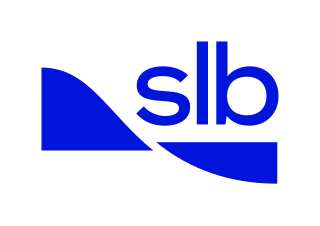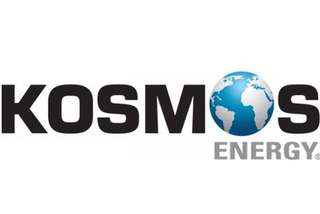Related Research Articles

The gross domestic product (GDP) of Niger was $16.617 billion US dollars in 2023, according to official data from the World Bank. This data is based largely on internal markets, subsistence agriculture, and the export of raw commodities: foodstuffs to neighbors and raw minerals to world markets. Niger, a landlocked West African nation that straddles the Sahel, has consistently been ranked on the bottom of the Human Development Index, at 0.394 as of 2019. It has a very low per capita income, and ranks among the least developed and most heavily indebted countries in the world, despite having large raw commodities and a relatively stable government and society not currently affected by civil war or terrorism. Economic activity centers on subsistence agriculture, animal husbandry, re-export trade, and export of uranium.

The Kerr-McGee Corporation, founded in 1929, was an American energy company involved in oil exploration, production of crude oil, natural gas, perchlorate and uranium mining and milling in various countries. On June 23, 2006, Anadarko Petroleum acquired Kerr-McGee in an all-cash transaction totalling $16.5 billion plus $2.6 billion in debt and all operations moved from their base in Oklahoma, United States. As a result of further acquisitions, most of the former Kerr-McGee is now part of Occidental Petroleum.

Schlumberger NV, doing business as SLB, also known as Schlumberger Limited, is an American oilfield services company. As of 2022, it is both the world's largest offshore drilling company and the world's largest offshore drilling contractor by revenue.
The Bonga Field is an oilfield in Nigeria. It was located in License block OPL 212 off the Nigerian coast, which was renamed OML 118 in February 2000. The field covers approximately 60 km2 in an average water depth of 1,000 metres (3,300 ft). The field was discovered in 1996, with government approval for its development given in 2002. The field began first production in November 2005. The field is worked via an FPSO vessel. The field produces both petroleum and natural gas; the petroleum is offloaded to tankers while the gas is piped back to Nigeria where it is exported via an LNG plant. The field contains approximately 6,000 MM barrels of oil.
Société nationale des pétroles du Congo is a national oil company of the Republic of the Congo. The company was established in 1998 after the dissolution of the public company Hydro-Congo. The company manages government-owned shares of production from oil fields in the country. The company has stakes in Moho-Bilondo (15%), Nkossa (15%), M'Boundi (8.8%), Kitina (35%), Sendji (15%), Yanga (15%), Djambala (35%), Foukanda (35%), Mwafi (35%), Emeraude (49%), Yombo (44%), Tilapia (35%), Azurite (15%), and Turquoise Marine-1 (15%) fields. It owns the refinery company named Congolaise de Raffinage (CORAF).

The Mining industry of Ghana accounts for 5% of the country's GDP and minerals make up 37% of total exports. Gold contributes over 90% of the total mineral exports. Thus, the main focus of Ghana's mining and minerals development industry remains focused on gold. Ghana is Africa's largest gold producer, producing 80.5 t in 2008. Ghana is also a major producer of bauxite, manganese and diamonds. Ghana has 20 large-scale mining companies producing gold, diamonds, bauxite and manganese; over 300 registered small scale mining groups; and 90 mine support service companies. Other mineral commodities produced in the country are natural gas, petroleum, salt, and silver.
Hydrocarbons are the leading sector in Algeria's mineral industry, which includes diverse but modest production of metals and industrial minerals. In 2006, helium production in Algeria accounted for about 13% of total world output. Hydrocarbons produced in Algeria accounted for about 2.9% of total world natural gas output and about 2.2% of total world crude oil output in 2006. Algeria held about 21% of total world identified resources of helium, 2.5% of total world natural gas reserves, and about 1% of total world crude oil reserves.
In 2006, Cambodia's mineral resources remained, to a large extent, unexplored. Between 2003 and 2006, however, foreign investors from Australia, China, South Korea, Thailand, and the United States began to express their interest in Cambodia's potential for offshore oil and gas as well as such land-based metallic minerals as bauxite, copper, gold, and iron ore, and such industrial minerals as gemstones and limestone.

Mining is the biggest contributor to Namibia's economy in terms of revenue. It accounts for 25% of the country's income. Its contribution to the gross domestic product is also very important and makes it one of the largest economic sectors of the country. Namibia produces diamonds, uranium, copper, magnesium, zinc, silver, gold, lead, semi-precious stones and industrial minerals. The majority of revenue comes from diamond mining. In 2014, Namibia was the fourth-largest exporter of non-fuel minerals in Africa.
The mineral industry of São Tomé and Príncipe does not play a significant role in the country's economy.
The mineral industry of Paraguay includes the production of cement, iron and steel, and petroleum derivatives. Paraguay has no known natural gas or oil reserves. To meet its crude oil and petroleum products demand, Paraguay relies completely on results of approximately 25,400 barrels per day (4,040 m3/d) (bbl/d). The mining sector contributes little to the country's economy, accounting for only 0.1% of its gross domestic production (GDP).

The mineral mining industry is a crucial piece of the Economy of Niger. Exports of minerals consistently account for 40% of exports.
The mineral-mining industry of Panama accounted for about 1% of the country's GDP in 2006. This does not include any manufacturing of mineral commodities, such as cement or petroleum refinery products.
Benin is a coastal country located in the Gulf of Guinea in Western Africa, which is a resource rich region. Energy in Benin has a diverse energy mix and takes several forms including: solar, wind, hydropower, biomass, fossil resources, and mineral resources. Out of this energy mix, about 60% of energy comes from biomass. Benin is also dependent on energy imports from Ghana and Côte d'Ivoire. While power plants and other energy facilities were built in the 1950s and 1960s, the lack of investment has led to deterioration over time. Similarly, its location in the Gulf of Guinea has led to an attempt of oil production starting in the late 1980s. However, due to unprofitable operations, oil production halted in 1998.
Mauritania's mineral sector was dominated by iron ore mining and beneficiation. Other mineral commodities produced in the country included cement, copper, gold, gypsum, petroleum, salt, and steel. The 'Ministère des Mines et de l’Industrie' was the Government agency responsible for enacting the Mining Code and for the coordination of all activities in the mining sector. The 'Direction des Mines et de la Géologie' was the entity responsible for promoting the mineral sector and for providing geologic and mining information to potential investors; the 'Direction des Hydrocarbures' was in charge of the development of the petroleum sector; and the 'Office Mauritanien des Recherches Géologiques' was the Government entity responsible for evaluating areas of mineral potential for exploration. The 'Société Nationale Industrielle et Minière (SNIM)' was responsible for iron ore production and benefciation.

Dana Energy is a private oil and gas company headquartered in Tehran, Iran. It is an exploration and production (E&P) and oilfield services company operating in Middle East and Asia. Formed in 2000, they were initially an oilfield services company and ventured into field development in 2008. By the addition of petroleum products trading to its portfolio in 2013, Dana Energy extended their business into the midstream sector, however due to sanctions imposed on Iran, their trading division came to a halt.
Oil and Gas dominate the resource sector of the Republic of the Congo, also referred to as Congo-Brazzaville, with the petroleum industry accounting for 89% of the country's exports in 2010. As of June 22, 2018, is a full member of the Organization of the Petroleum Exporting Countries (OPEC), and among African crude oil producers in 2022, The Congo ranked sixth. Nearly all of the country's hydrocarbons were produced off-shore.

Kosmos Energy is an American upstream oil company founded and based in Dallas, Texas. While previously incorporated in Bermuda, Kosmos has reincorporated in Delaware. The company holds production and development operations offshore Ghana, Equatorial Guinea, and Gulf of Mexico, while holding a development project offshore Mauritania and Senegal, and exploration licenses offshore Namibia, São Tomé and Príncipe and Suriname. It was previously involved in exploration offshore Morocco and Western Sahara. It discovered the Jubilee oil field off the coast of Ghana and the cross-border Tortue gas field offshore Mauritania and Senegal. Kosmos was the focus of a documentary Big Men that followed the company as it worked to establish the Jubilee oil field in Ghana.

Cove Energy plc, also known as Cove, was a London-headquartered oil and gas exploration company with assets in East Africa. The company was created in June 2009. In 2012, following significant gas discoveries offshore Mozambique, Royal Dutch Shell and PTT Exploration and Production (PTTEP), a subsidiary of Thailand's national oil company PTT Public Company Limited, engaged in a prominent bidding war to acquire Cove. Ultimately, the company was sold in August 2012 to PTTEP.
References
- 1 2 3 4 5 6 7 Omayra Bermúdez-Lugo. "The Mineral Industry of Benin, Burkina Faso, and Sao Tome e Principe" Archived 2017-02-15 at the Wayback Machine . 2006 Minerals Yearbook . U.S. Geological Survey (October 2007). This article incorporates text from this U.S. government source, which is in the public domain .